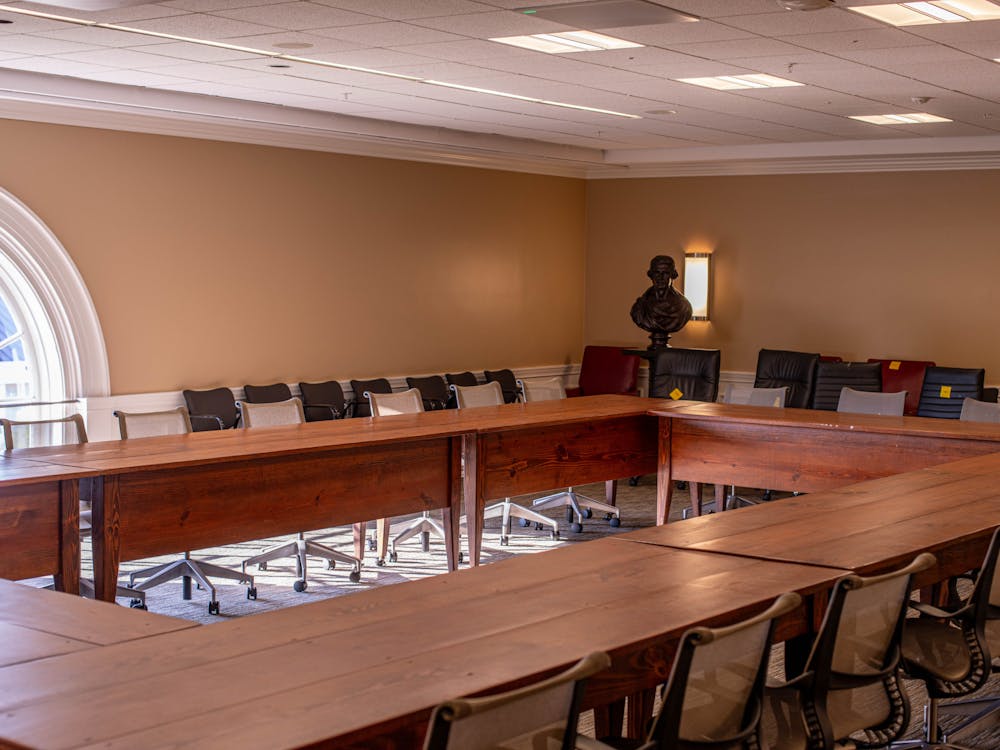Carr’s Hill, which has traditionally served as the residence of University presidents, is expected to undergo repairs in the near future as the University community celebrates the building’s centennial.
The building, which is in close proximity to both the Rotunda and the Lawn, has been a historical fixture on Grounds since it was built in 1909. Carr’s Hill has since undergone only minor architectural changes other than the addition of modern amenities and a renovation in 1974, according to an official history documenting Carr’s Hill on the University Web site.
Stanford White, the designer previously chosen to restore the Rotunda after it suffered damages in the fire of 1895, was originally selected to lead the design team for the construction of the building but was assassinated in 1906 before the designs were finalized, the history states. White’s general ideas, however, were maintained in the final design and the building still stands today, serving as both the president’s residence and as a welcoming place for first-year students and new graduates.
University Senior Historic Preservation Planner Brian Hogg said Carr’s Hill is currently in need of general maintenance, basic restoration and “nuts and bolts” repairs. He said the building also needs updates to its utility systems, including the plumbing and air conditioning.
Though no specific plans have been made and no preliminary architectural drawings have been completed, Hogg said some aspects of the planned renovation are almost certain, including major changes to the building’s roof.
When Carr’s Hill was first constructed nearly 100 years ago, “it wasn’t properly framed, so it pushed one of the staircases down and now there is a dip in the floor,” Hogg said. “The roof is stable, but we want to get everything framed right so the brick walls carry the loads, not the wood walls.”
Aside from these practical repairs, however, Hogg said he was hesitant to say the building will see more substantial renovations. The building is remarkably similar to how it was when originally constructed; therefore, Hogg noted, there probably will not be much discussion about changes to the building’s façade or any other substantial renovations.
“A balustrade is missing from the roof, and it might be nice to replace that,” Hogg said, noting, though, that the building overall is “astoundingly unchanged over time” despite being built nearly a century ago.
University spokesperson Carol Wood said there is no definite start date for the Carr’s Hill renovation. She estimated, though, that it will likely begin in spring 2010.
Hogg similarly said he does not have any exact timeframe for the renovations but noted that he expects the project to last 18 months from beginning to end. The University does not yet have a set budget for the project, he said.
“Basically, we just want to put the house in order as it celebrates its centennial, to really make the house function well again as it did,” Hogg said.
Wood said University President John T. Casteen III and his family are planning to use a historic house designed by retired Architecture Prof. William Weedon near the University Alumni Association as the official residence of the University president while Carr’s Hill is renovated.






